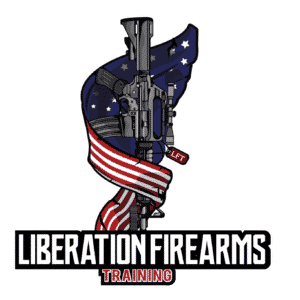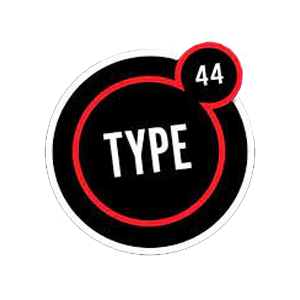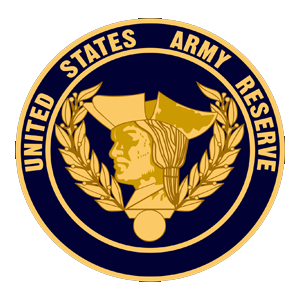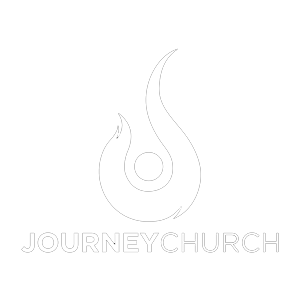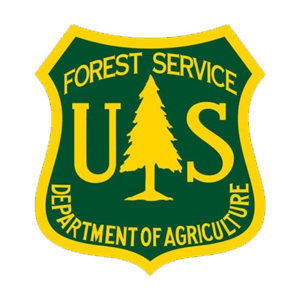Menu
BLOG ARTICLES
Competitor Feature: Matthew White and Danny Stokes – Conquering Endeavor

Competing in the Endeavor Team Challenge is a task for those types of people who relish type 2 fun, the type who like to push themselves beyond comprehension, the crazy ones who test themselves to see how far past their comfort zone they can push. Matthew White is one of those people, but the difference between Matthew and every other competitor that has stepped to the starting line is that he did it with 1 less foot.
This past year, the Endeavor Team Challenge partnered up with Operation Enduring Warrior to bring one of their adaptive athletes to Bear Valley and out onto the course. Operation Enduring Warrior (OEW) is a veteran- founded non‐profit 501(c)(3) whose mission is to honor, empower, and motivate our nation’s wounded military and law enforcement veterans through physical, mental and emotional rehabilitation. Matthew White lost his lower right leg when he stepped on an IED in Afghanistan in 2010, got connected to OEW in 2014, and was the adaptive athlete selected to compete.
founded non‐profit 501(c)(3) whose mission is to honor, empower, and motivate our nation’s wounded military and law enforcement veterans through physical, mental and emotional rehabilitation. Matthew White lost his lower right leg when he stepped on an IED in Afghanistan in 2010, got connected to OEW in 2014, and was the adaptive athlete selected to compete.
We featured both Matthew and his teammate Danny Stokes, who leads OEW’s Adventure and Endurance Program, in posts prior to the event. Now, we sit down with them to get their post event reaction – what went well, what didn’t, what was unexpected, and what advice they have for future competitors of all types.
Q: There was some tumultuous events leading up to even arriving in Bear Valley. What was going on?
Danny: For an event of this caliber and length, we wanted to have a team of 3 supporting Matthew. The plan was to have 2 teams of 2 and move together through the course. Matthew and I would make up one team with Jeff Farmer and Rich Jacob making up the other. Due to some flight delays and cancellations, Jeff and Rich ended up getting stranded in the middle of the country and it became apparent that if OEW was going to participate in the Endeavor Team Challenge, it would just be Matthew and me at least for the first half of the race.
What added an interesting variable to the entire thing was that Matthew and I had never met before so we didn’t know each other’s capabilities. I knew Matthew was a certified bad ass because otherwise we wouldn’t have selected him to compete, but that’s a long way from training together and knowing our dynamics.
Q: Walk me through the start of the actual event.
Matthew: It was excited getting to the starting line early Saturday. The energy was electric and you could tell there was a lot of anticipation all around. Starting off right away with the Battle Drill was a surprise – I think it surprised everyone, but I loved it. It brought me back to those early morning PT days during Basic Training. I’m not a Crossfitter but I felt really good. It was actually nice having the Battle Drill so early. It woke me up but also made me realize the altitude. It’s no joke!
Danny: Any questions of how Matthew would do were immediately gone. He can flat out haul! He picked me up for the buddy carry and hustled across the field like a hoss!
Q: How did you fare through the rest of the event?
Matthew: I felt really good for most of the Crucible, but it was a lot longer than we expected. Danny took the lead during it and I was thankful for that.
Danny: We were feeling good and enjoying ourselves for most of the Cruicible. Major props to Matthew at the water crossing – some teams were struggling moving through the water efficiently so having one less foot to kick with would freak me out.
Matthew: I’m by no means a strong swimmer, but we got through it. Once we began moving up Inspiration point was when I first starting feeling like I was getting my ass kicked. The terrain was really loose with a lot of skree so the going was slow and I felt a friction point developing on my stump, which would later become a big problem.
Danny: What people might not realize is that an amputee has to work twice as hard to move the same distance. Matthew’s good leg had to compensate for his missing one so he was expending so much more energy. We expected the altitude to kick ass and the terrain to be steep but the skree made it that much worse. We knew parts were going to be a struggle but I think we underestimated the loose surface, which really added to the wear and tear on Matthew’s stump.
 Matthew: I was really happy with our performance in the Competitor Field. We did well at the strength event and the obstacle course, which had one of the cooler moments of the event for me. As we were getting on the last obstacle, Jeff and Rich finally arrived and jogged up with the flag and we all ran together back through the finish line together.
Matthew: I was really happy with our performance in the Competitor Field. We did well at the strength event and the obstacle course, which had one of the cooler moments of the event for me. As we were getting on the last obstacle, Jeff and Rich finally arrived and jogged up with the flag and we all ran together back through the finish line together.
Danny: I agree, there was a lot of pride that welled up with the colors of OEW over our heads and it was a great moral boost to get the rest of our team with us. Perhaps it was that boost, but I think we crushed Jeff’s and Rich’s score at the strength event even though they were still so fresh.
Matthew: After competitor field when we had an hour of down time was when things started to get bad for me. The friction between my stump and my prosthetic leg had gotten pretty bad and with the time off our feet, my stump swelled up pretty good and there was a gnarly sore developing. Luckily, Jeff and Rich were there too to help me and we got through Night Orienteering. The next morning though was rough. I woke up and my stump was worse so we made the decision to lance it. Rich had some Lidocain so we put that on it, which helped for a time, but the Final Run route was grueling. I remember walking up a black diamond ski slope with no trail and thinking “this sucks.” I was in a lot of pain and was getting pretty aggravated by the situation and don’t think I would have gotten through it without my team. They really helped me keep my head in the game.
Danny: At the start, we defined success as completing the event. During that Final Run Matthew wasn’t in a good place mentally, but we knew what we wanted to achieve and we got through it.
Q: You had a vague notion of what you were getting yourself into when you registered, but what unique or unexpected challenges did you face as an adaptive athlete?
Matthew: I’ve run marathons and hike around the Shenandoah Mountains so I’m no stranger to long distances, but this was something else. Swelling and sores from friction are an inherent issue for lower leg amputees when moving long distances, but marathons and hikes are done in 4-5 hours so the pain never gets too bad or if it does, it’s always over soon enough. For me, there’s no way to simulate moving for 30 straight hours and add in loose terrain and lateral movements and so the pain got really bad.
Danny: We had little intel going into the event so we had the mindset of expect the unexpected. That helped us handle most of the ambiguity. Whatever you threw at us, we were going to kick it down. OEW really picked a good athlete in Matthew, though. He was an absolute hoss out there and endured so much pain that would have had most people tapping out.
Q: What were the highlights of the event for you?
Matthew: As I mentioned, seeing Jeff and Rich show up with the flag was amazing. It really helped lift my spirits. The Crucible was also great. I was still feeling good and although the hike to the top of Inspiration Point sucked, the views at the top were incredible. I think the best part for me though was rounding the last bend during the Final Run. It was the four of us holding the OEW flag. We weren’t moving fast, but seeing the finish line and thinking back through everything I endured and knowing that we had made it through the challenge gave me a rush of emotions and pride.
Danny: I agree with Matthew. Rounding the corner with everyone cheering us on, all the spectators and competitors who had already finished, felt really good. Everything that Matthew pushed through – this gut check was coming to an end.
Q: You made it through despite how hard it was – what would you do differently next time?
Danny: I think the first thing we’d do is get out our gear list and get rid of nearly everything we didn’t use. I think we both probably overpacked a bit to try to accommodate the uncertainties that we’d face. It would also help if we had rehearsed things or trained together to get more accustomed to each other. We had a pretty smooth water crossing transition even with Matthew having to waterproof his leg but even so, rehearsing things with each other would have gone a long way.
Matthew: For me, I could really improve my nutrition. I mostly packed bars because that’s what I usually eat when I’m out hiking, but those hikes are only a few hours. Trying to rely on bars for 30 hours was a mistake and I should have packed a more substantial meal. I even started feeling a bit light headed at one point during Competitor Field, which definitely didn’t help. A lighter pack would have been helpful too. My pack was pretty heavy but I actually almost packed more. I thought about bringing a second leg and a foot designed specifically for rock climbing, but I’m glad I left them behind.
Q: Any recommendations for future competitors?
Danny: Have a plan going into the event. It’s not an OCR, it’s not just a run or a ruck. It’s unique. It’s team based, multi-stage, multi-day, and it will challenge you. There’s so much opportunity for coming up with a strategy so take advantage of that and you’ll have a good experience.
Matthew: And train hard. It’s not easy. I find myself talking to other adaptive athletes and they ask me how it was and I tell them that it kicked my butt. It’s not an event for everyone, but it’s not designed to be. I like that not everyone finishes – you have to really push yourself past your limits to succeed. Now that I’ve completed it, I hope that it inspires other adaptive athletes to try it.
Congratulations to Matthew and the OEW team for succeeding with their mission. To any adaptive athletes who are curious about the event and potentially want to take it on, reach out to us at info [at] endeavor-usa.com and we’d be happy to talk.




